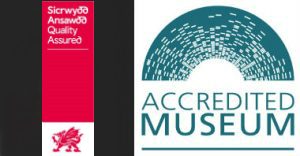The natural advantages of Swansea’s Tawe Valley – coal and water – drew businessmen and scientists who came here to develop metal industries.
The mouth of the Tawe provided a safe harbour. Small ships could sail up the river to deliver the ore directly to the copper works and carry away the refined metal.
The first copper works in Swansea were established in Landore in 1720 by Dr Lane and Mr Pollard, who had owned copper mines in Cornwall.
Three to four tons of coal was needed to smelt one ton of copper ore, so it made economic sense to bring the ore to the coal.
The hard glistening coals hillsides around Swansea and Neath, were ideal for copper smelting, and the copper ores of Cornwall, just a short sea journey away. Refining the copper needed a lot of coal, and the Welsh coal fields lay midway between the ore fields of Cornwall and the metal hungry factories of the English Midlands.
By 1823 there were nine copper works in the lower Tawe valley, just outside the town.

